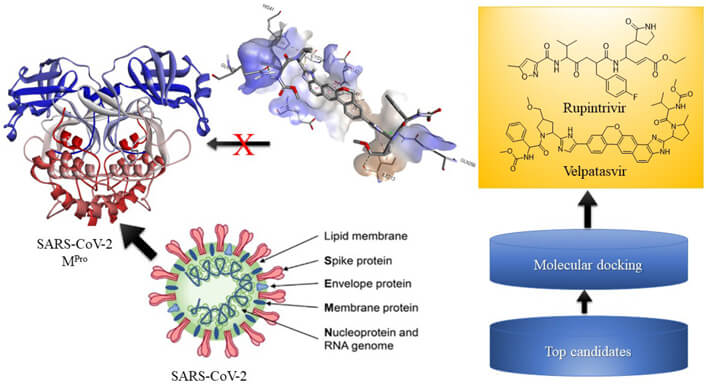In silico drug discovery against viral targets. The growing role of molecular docking

Decoding molecular docking
Molecular docking is like a digital puzzle solver, predicting how small molecules fit into viral proteins to block their function. Picture a key slotting into a lock that’s docking, but in a computer, analyzing 3D interactions at the atomic level. In antiviral drug discovery, it targets proteins critical to viral replication, like proteases or polymerases, helping researchers find molecules that stop viruses in their tracks.
Transforming antiviral drug development
Traditional drug discovery is slow, testing thousands of compounds in labs over years. Molecular docking flips this, virtually screening millions of molecules in days to find those that bind tightly to viral targets, such as SARS-CoV-2’s spike protein. Top candidates move to lab testing, cutting costs and time. For instance, docking helped identify remdesivir’s potential against Ebola and COVID-19 by modeling its fit with viral RNA polymerases.
Tackling viral challenges with precision
Viruses evolve fast, with mutations creating drug-resistant strains, as seen in HIV or influenza. Docking counters this by designing inhibitors for specific viral proteins, like HIV’s integrase, ensuring precise binding. It also supports drug repurposing screening existing drugs for new viral targets, speeding up responses to outbreaks. For hepatitis C, docking refined sofosbuvir, targeting NS5B polymerase with high specificity.
Why docking is essential
Docking accelerates drug discovery by 50-70%, slashing early-stage costs and filtering vast chemical libraries into manageable leads. Its precision shines in multi-target strategies, vital for viruses with complex life cycles. Platforms leveraging advanced molecular docking integrate AI to boost prediction accuracy, reducing false positives and guiding lab efforts with data-driven confidence.
Overcoming limitations and looking ahead
Docking faces hurdles: flexible viral proteins or solvent effects can skew predictions, and mutation-prone viruses demand constant updates. Hybrid models with molecular dynamics and AI are improving accuracy, while quantum computing promises sharper binding forecasts. Future docking could integrate viromics data, tailoring antivirals to emerging strains, making it a cornerstone of rapid-response drug design. Molecular docking is revolutionizing antiviral drug discovery, offering speed, precision, and hope in the race against viral threats.




